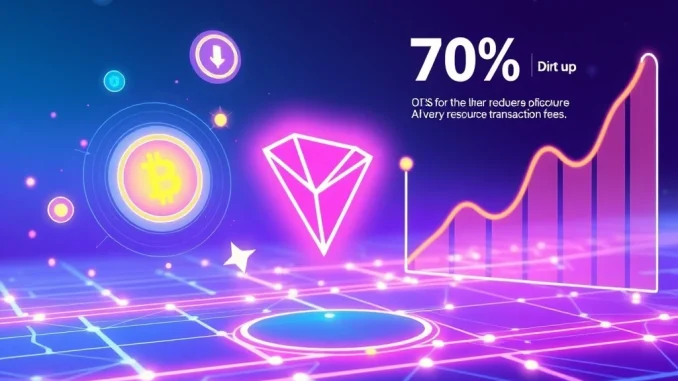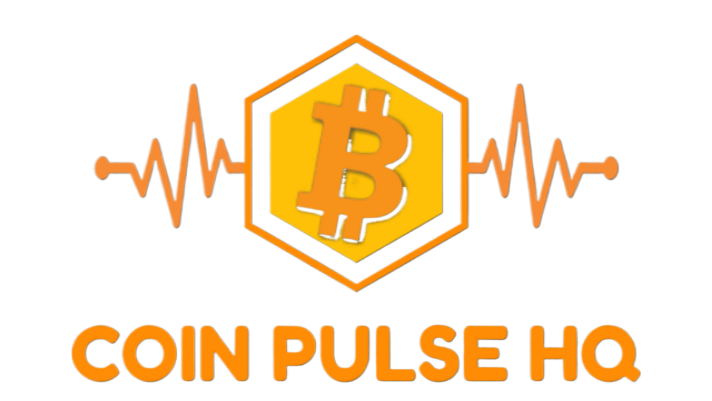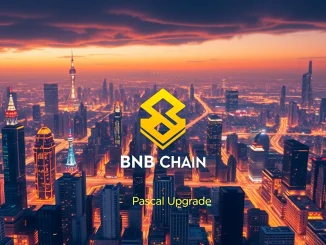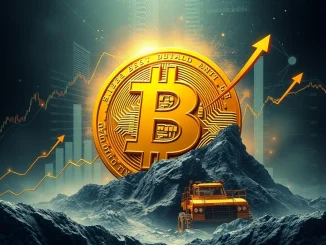
Imagine a world where your blockchain transactions cost next to nothing. This isn’t a distant dream; it’s the new reality for users on the Tron network. Tron’s recent implementation of a groundbreaking “Gas-Free” feature has sent shockwaves through the crypto space, significantly enhancing the user experience and setting a new benchmark for network efficiency. If you’re tired of exorbitant fees on other networks, Tron’s innovative approach to cutting costs is poised to capture your attention.
Unpacking Tron’s Revolutionary Gas-Free Feature
Tron’s “Gas-Free” feature isn’t just a catchy name; it represents a fundamental shift in how transaction costs are managed on a blockchain. Since its rollout in early 2025, this innovative model has driven the average weekly transaction fees on the Tron network down by a staggering 70%. Data from Nansen, widely cited by Lookonchain on X, paints a clear picture: fees plummeted from 2.47 TRX to a mere 0.72 TRX. This dramatic reduction is a testament to Tron’s commitment to making blockchain technology more accessible and affordable for everyone.
Unlike traditional blockchain models where every action incurs a direct fee (often called ‘gas’), Tron’s system leverages a unique resource framework. Users can perform transactions without direct TRX payments in many cases, thanks to optimized resource management and a clever system of staking incentives. This positions Tron as a highly competitive alternative, especially when compared to fee-heavy networks like Ethereum, making it ideal for:
- Micro-transactions
- Frequent DeFi interactions
- Everyday dApp usage
How Staking Incentives Drive Unprecedented Transaction Fees Savings
At the heart of Tron’s “Gas-Free” model lies its ingenious system of staking incentives. Instead of paying a direct fee for each transaction, users can stake their TRX tokens to obtain daily quotas of Energy and Bandwidth. These resources are consumed when performing operations on the network, such as sending tokens or interacting with smart contracts. By staking TRX, users essentially pre-pay for their network usage in a way that often feels free, as long as their daily quotas are sufficient.
This mechanism not only eliminates the need for direct TRX payments for most routine transactions but also significantly reduces the overall cost burden. For example, if you stake a certain amount of TRX, you might receive enough daily Energy and Bandwidth to cover dozens, if not hundreds, of transactions without spending any additional TRX. This system encourages long-term holding of TRX, contributing to network stability while simultaneously making the user experience incredibly cost-effective. The enhanced resource allocation, coupled with strategic developer subsidies, further amplifies these cost savings, fostering a seamless user experience and encouraging innovation across various sectors, particularly in blockchain gaming and decentralized finance.
Boosting Blockchain Affordability: A Game Changer for Users and Developers
The implications of Tron’s “Gas-Free” feature are profound, creating a win-win situation for both network users and developers. This leap in blockchain affordability addresses one of the biggest hurdles to mass adoption: high transaction costs.
For everyday users, the benefits are clear:
- Cheaper Remittances: Sending money across borders becomes significantly more economical.
- Frequent dApp Engagement: Users can interact with decentralized applications more often without worrying about accumulating fees.
- Reduced Friction: The lower cost barrier makes adopting blockchain technology less intimidating for newcomers.
Developers, too, stand to gain immensely:
- Lower Operational Costs: Building and maintaining decentralized applications on Tron becomes more sustainable.
- Scalable Projects: The reduced cost per transaction enables the creation of more scalable and user-friendly applications.
- Accelerated Innovation: Developers are encouraged to experiment with complex smart contracts and innovative solutions, knowing that the underlying network costs won’t stifle their creativity or user adoption.
This cost-effective environment can accelerate the network’s growth potential, attracting more talent and projects to the Tron ecosystem.
Resource Optimization: The Engine Behind Tron’s Efficiency
The impressive fee reduction on Tron is not just about staking; it’s deeply rooted in sophisticated resource optimization. Tron’s unique Energy and Bandwidth resource framework is designed to manage network capacity efficiently, ensuring smooth operations even under high demand. Bandwidth is consumed for simple transfers, while Energy is required for smart contract executions. By separating these resources and allowing users to acquire them through staking, Tron effectively manages network congestion and prevents spam.
This optimized allocation ensures that the network remains performant and cost-effective. Developers also play a role by optimizing their smart contracts to consume fewer resources, further contributing to the overall efficiency. Furthermore, Tron’s ecosystem often includes developer subsidies or mechanisms to cover a portion of user fees for specific dApps, enhancing the “Gas-Free” experience and making applications even more attractive to users.
Navigating the Landscape: Challenges and Future Outlook
While Tron’s “Gas-Free” model presents significant advantages, it’s important to acknowledge potential challenges. The primary concern is that while it appears cost-free, users must stake TRX to access the daily Energy and Bandwidth quotas. This could pose a barrier for newcomers who do not yet hold TRX, potentially requiring a small initial investment to fully leverage the “Gas-Free” benefits.
Additionally, during periods of extreme network congestion, even staked resources might temporarily deplete, forcing users to pay small TRX fees for urgent transactions. Critics also frequently point to Tron’s Delegated Proof of Stake (DPoS) consensus mechanism, which relies on a limited number of Super Representatives (validators), as a potential centralization risk. However, it’s crucial to note that this is a characteristic of its consensus model and not directly related to the fee structure.
Despite these considerations, Tron’s success with its fee reduction strategy could mark a pivotal shift in the broader crypto ecosystem. High fees have historically been a major hindrance to mass adoption, particularly on networks like Ethereum during peak congestion. Tron’s ability to offer such affordability could pressure other blockchains to explore similar optimizations, prioritizing user-centric efficiency over traditional gas models. This competitive pressure could spur significant innovation in both Layer 1 and Layer 2 solutions across the industry, reshaping the future competitive landscape of decentralized networks.
For users looking to maximize their benefits, staking TRX to secure daily resource quotas is key. Developers are encouraged to optimize their smart contracts and explore available fee subsidies to enhance user adoption. Despite lingering concerns, the dramatic 70% fee reduction underscores Tron’s strategic focus on accessibility, aligning perfectly with broader industry trends toward scalable, cost-effective blockchain solutions.
Frequently Asked Questions (FAQs)
Q1: How does Tron’s “Gas-Free” feature actually work?
Tron’s “Gas-Free” feature allows users to perform transactions without direct TRX payments by utilizing a resource framework of Energy and Bandwidth. Users obtain daily quotas of these resources by staking (locking up) their TRX tokens. When a transaction occurs, these resources are consumed instead of direct TRX fees, making many transactions effectively free until the daily quota is exhausted.
Q2: What is the significance of the 70% fee reduction?
The 70% fee reduction means that the average cost of a transaction on Tron has significantly decreased, making the network much more affordable for everyday users and developers. This reduction makes micro-transactions, frequent DeFi interactions, and dApp usage highly economical, removing a major barrier to blockchain adoption and competition with other networks like Ethereum.
Q3: Do I always avoid fees on Tron with this feature?
While many routine transactions can be “Gas-Free” if you have sufficient staked TRX and corresponding Energy/Bandwidth quotas, there are exceptions. If you don’t stake TRX, or if network congestion is high and your daily free resources are depleted, you might still need to pay a small amount of TRX for urgent transactions. The model aims to make most common interactions feel free.
Q4: How does this benefit developers on the Tron network?
Developers benefit from significantly lower operational costs, enabling them to build and maintain more scalable and sustainable decentralized applications (dApps). Reduced costs encourage experimentation with complex smart contracts and foster innovation, as the financial barrier for users to interact with their dApps is much lower.
Q5: What are Energy and Bandwidth in the Tron ecosystem?
Energy and Bandwidth are two types of resources on the Tron network that are consumed when performing operations. Bandwidth is used for simple transactions like sending TRX, while Energy is consumed for more complex operations, particularly smart contract executions. Users acquire these resources by staking TRX, which regenerates daily.
Q6: Is Tron’s DPoS consensus mechanism related to its fee structure?
Tron’s Delegated Proof of Stake (DPoS) consensus mechanism is separate from its fee structure. While DPoS has its own characteristics, such as reliance on a limited number of validators (Super Representatives) which some critics point to as a centralization risk, this is distinct from how transaction fees (or the lack thereof) are managed through the Energy and Bandwidth resource model.



